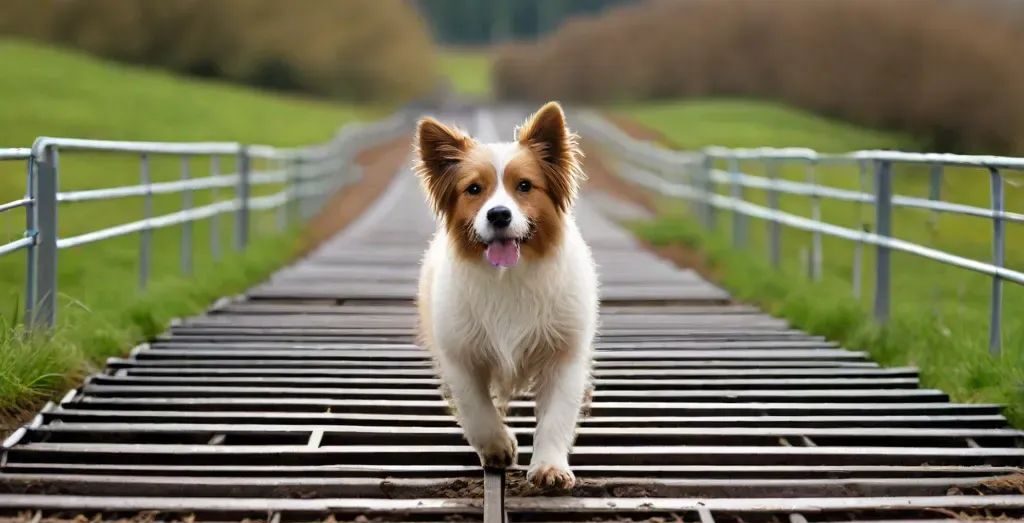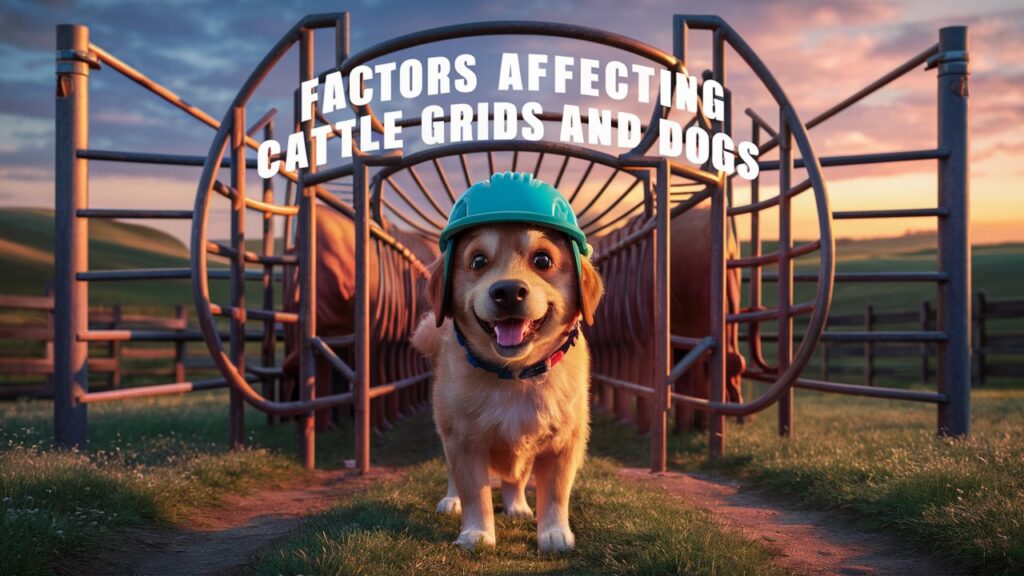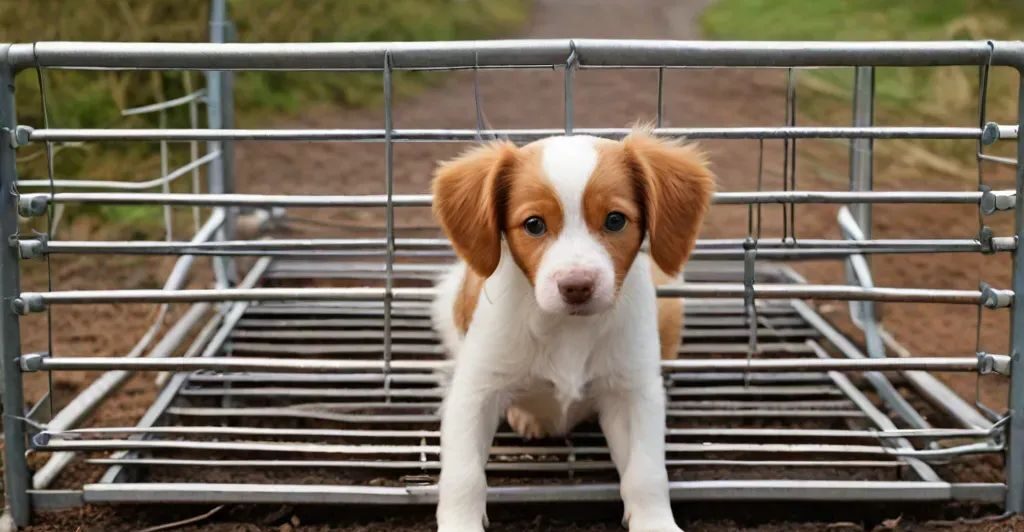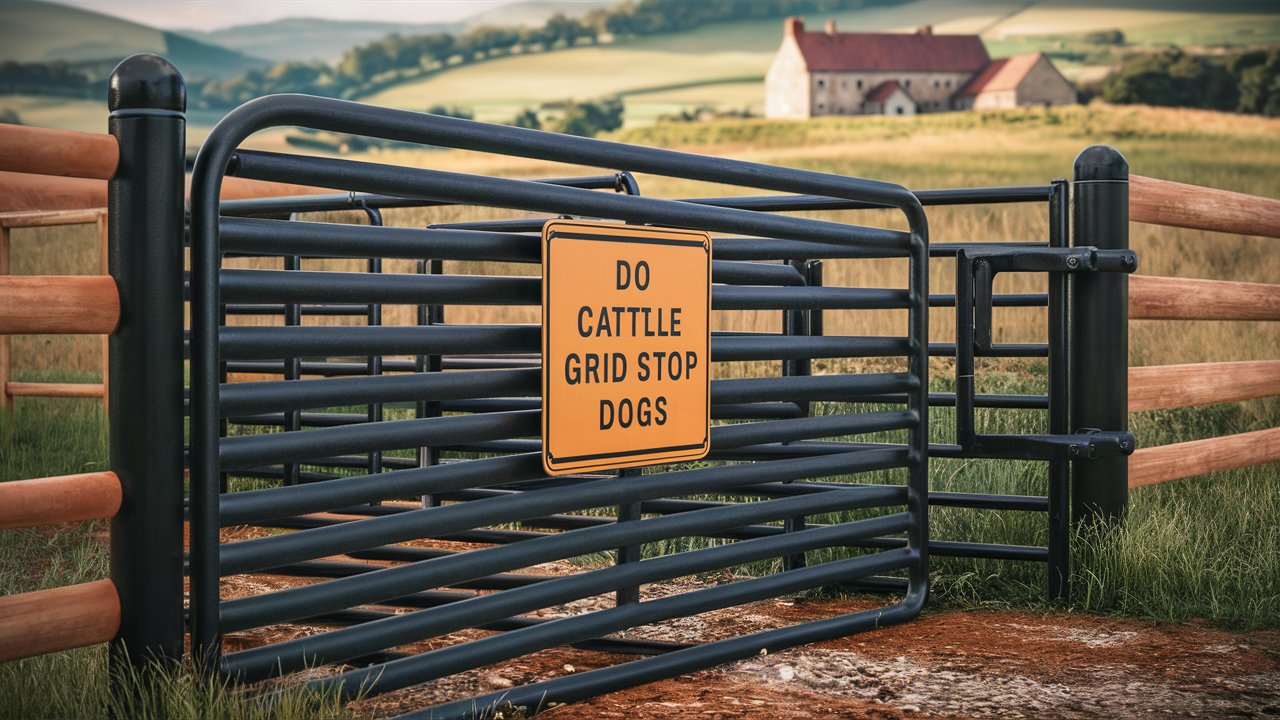
Do Cattle Grid Stop Dogs
What Are Cattle Grids?
Cattle grids, also known as cattle guards, are barriers designed to keep livestock, such as cattle and sheep, from crossing certain areas like driveways or roads. They consist of a series of parallel bars or grates set into the ground, spaced apart to prevent animals from walking through.
The design creates an obstacle that animals are unwilling to cross due to the gaps and the instability of the bars, which makes it difficult for them to maintain footing. Cattle grids are commonly used in rural areas to control the movement of livestock without the need for traditional gates or fences.
How Do Cattle Grids Work?
Cattle grids consist of metal bars set into the ground with gaps in between. These gaps make it difficult for cattle to cross, as their hooves can slip between the bars. The design works effectively for livestock, but what about dogs?

Factors Affecting Cattle Grids And Dogs
Cattle grids are a common sight in rural areas, designed primarily to keep livestock like cattle within designated areas. But when it comes to dogs, several factors influence whether a cattle grid will effectively deter them.
Dog Size and Weight
The size and weight of a dog play a significant role in whether a cattle grid will stop them. Smaller dogs with lighter bodies are more likely to be able to navigate across the grid without much difficulty. Their paws may fit more easily between the bars, allowing them to tread carefully across. Larger dogs, on the other hand, may find it harder to cross, but they could potentially leap over the grid if motivated.
Dog’s Temperament
A dog’s temperament is another crucial factor. Some dogs are naturally cautious and might be hesitant to cross a cattle grid, either because of the appearance of the bars or the sensation under their feet. Others, especially more adventurous or bold dogs, might attempt to cross without much hesitation, particularly if they see something interesting on the other side.
Type of Cattle Grid
The design of the cattle grid itself can also affect its effectiveness. Cattle grids with wider gaps between the bars may deter dogs more effectively, especially smaller ones, as their paws could slip through, making crossing uncomfortable or frightening. Conversely, grids with narrower gaps might be easier for dogs to cross, reducing their deterrent effect.
Ground Surface and Environment
The ground surface around the cattle grid and the environment also influence a dog’s behavior. If the ground is uneven or if there are distractions, such as other animals or interesting smells, a dog may be less focused on the grid and more likely to attempt to cross it. Additionally, if the grid is placed on a slope or in a wet area, it might be more challenging for a dog to cross due to the increased risk of slipping.
Motivation to Cross
Finally, a dog’s motivation to cross the cattle grid is perhaps the most determining factor. If a dog is strongly motivated, whether by the sight of another animal, the call of their owner, or a tempting scent, they are more likely to attempt to cross the grid, regardless of its design or their temperament.

Practical Observations
Cattle grids, also known as cattle guards, are designed to prevent livestock from crossing certain areas by utilizing a series of bars or grids that are too wide apart for animals to step through. Here are some practical observations on how effective they are in stopping dogs:
1.Design and Structure:
Cattle grids are typically designed with bars spaced far enough apart to prevent larger animals like cows from walking through. However, the spacing between the bars can sometimes be wide enough for smaller animals, including dogs, to slip through, especially if the grid isn’t properly maintained or if the gaps are larger than standard.
2.Dog Size and Breed:
The effectiveness of a cattle grid in stopping dogs can depend on the size and breed of the dog. Small or agile dogs might find it easier to navigate or cross the grid, while larger dogs might be deterred by the design. However, even larger dogs might attempt to cross if they are highly motivated.
3.Behavioral Factors:
Dogs are generally more motivated by scents and stimuli than by physical barriers. If a dog is driven by a strong scent or a high level of curiosity, it might attempt to cross a cattle grid despite the physical challenge. Some dogs might even try to jump over or around the grid.
4.Maintenance:
The effectiveness of a cattle grid also depends on its maintenance. If the bars become misaligned or if debris accumulates in the grid, it can reduce the effectiveness in stopping animals, including dogs. Regular inspection and upkeep are crucial for ensuring it remains a functional barrier.
5.Visual Perception:
Dogs may not always perceive cattle grids as a significant barrier. The appearance of the grid might not immediately discourage them, especially if they can see or smell something attractive on the other side. Training and conditioning can also influence how dogs react to such barriers.
6Alternative Solutions:
For areas where cattle grids are not effective at keeping dogs out, additional measures might be needed, such as fencing or barriers that are specifically designed to prevent smaller animals from passing through. Ensuring that there are no gaps or weaknesses in these barriers can provide a more reliable solution.
Conclusion: Do Cattle Grid Stop Dogs
In conclusion, while cattle grids are effective at deterring larger livestock from crossing, their ability to stop dogs is less straightforward. The success of a cattle grid in keeping dogs out depends on factors like the dog’s size, agility, and the condition of the grid itself.
Smaller or more agile dogs might navigate around or slip through the grid, especially if it’s not well-maintained. To ensure reliable control over dogs, additional measures such as specialized fencing or barriers may be necessary alongside or instead of a cattle grid.
FAQs: Do Cattle Grid Stop Dogs
1.Do cattle guards work for dogs?
Cattle guards can sometimes deter dogs, especially larger breeds, due to their design. However, their effectiveness can vary depending on the dog’s size and agility. Smaller or more agile dogs might still be able to navigate around or slip through the grid.
2.Can dogs walk over cattle grids?
Generally, dogs can find ways to cross cattle grids, especially if they are small or agile. The gaps in the grid might be wide enough for some dogs to slip through, and determined or motivated dogs may still manage to get across.
3.Are cattle afraid of dogs?
Cattle can be wary of dogs, especially if the dogs exhibit aggressive or persistent behavior. Dogs can pose a threat to cattle, which may cause the animals to become stressed or fearful. However, cattle typically avoid dogs if they are not a direct threat.
4.How to stop dogs chasing cows?
To prevent dogs from chasing cows, ensure proper training and control of the dogs. Use physical barriers like fences or cattle grids, and consider training techniques that discourage chasing behavior. Supervision and proper management of both the dogs and livestock are crucial.
5.Will cattle panels keep dogs in?
Cattle panels, which are designed to contain livestock, can be effective in keeping dogs contained if they are tall enough and securely installed. However, the effectiveness also depends on the dog’s size and agility. Ensure panels are installed without gaps and are high enough to prevent climbing or jumping.

Leave a Reply